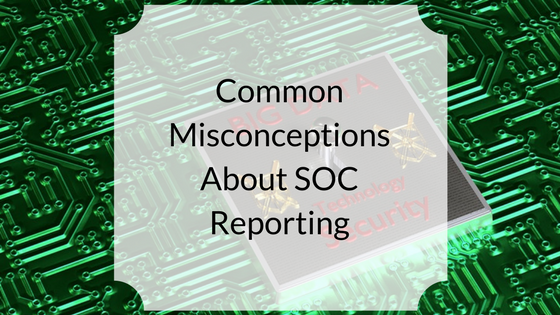
Service organization reports (SOC) are vital to businesses. These internal reports let organizations know about the risks associated with outsourced services. They help to establish regulatory compliance and are an extremely important part of any cybersecurity audit. Organizations use SOC reporting to reveal vulnerabilities in their current systems and find out whether their business or their clients are at risk from security flaws.
Unfortunately, there are many misconceptions about what SOC reports are and what they can accomplish. Many people think that these reports provide them with security certifications or that the reports can be shared with clients, while others are confused about which controls are actually included within the report.
Due to the importance of SOC reporting for industry security, these misunderstandings are a cause for concern, as they imply that organizations may not be using the reports correctly, which could lead to them failing to properly secure their services. To clear up any confusion, let’s take a look at some of the common misunderstandings surrounding SOC reporting and find out what the truth really is.
Misconception No. 1: Passing an SOC Report Is the Same as Certification
One of the biggest mistakes people make is to think that an SOC report is the same thing as a certification. This is not the case. However, an SOC report is often the first step toward getting a certification. The purpose of SOC reporting is to ensure that external service providers meet the standards set out in regulations. Once a vendor has demonstrated that its services can meet these standards and that they don’t impose unacceptable risks on the vendor’s clients, the process of becoming certified can begin.
Once you receive your SOC report, you should verify the controls outlined in the report, address any outstanding security issues, and consider whether you are ready to apply for certification. An SOC report can be a valuable tool in helping you make that decision, but it is important to remember that it is not itself a certification.
Misconception No. 2: SOC Reports Can Make Good Marketing Materials
SOC reports are designed to form part of an internal cybersecurity audit. They should never be used as marketing materials, even if they indicate that your organization excels at information security controls and standards. Instead, you should use your SOC report to make your internal controls stronger. Using an SOC report in this way can help you to protect the security of your organization and that of any clients who depend on you.
SOC reports usually have restrictions on their distribution, which means that you can’t show them to anyone outside of your organization. Instead of using these reports directly as part of your marketing campaign, focus on the conclusions that you can draw from the SOC report and find ways to embed them into your marketing messages. While customers are generally more interested in high-level overviews of your security standards than lengthy reports that give all the details, being ready f or the regulated or risk savvy clients should be asking for this information can greatly benefit your marketing campaigns.
Misconception No. 3: The Auditor Does Not Test the Effectiveness of Entity-Level Controls
Many people mistakenly think that SOC auditors don’t test the effectiveness of entity-level controls. In reality, the testing of these controls is an essential part of the process of preparing an SOC report. Contrary to popular belief, SOC service auditors look carefully at factors such as the control environment, information and communication within the organization, monitoring and risk assessment. The investigations by the service auditor into these aspects of security are an important part of the SOC reporting process. This is as it should be, as entity-level controls can have a huge effect on the overall security situation. By including tests of the effectiveness of these controls in the SOC report, auditors ensure that organizations receive a full picture of the security risks that they could face.
Hire A Trusted SOC Testing Specialist
As you can see, there are many misconceptions circulating about SOC reporting and what it can mean for your business. Hopefully, the information given here has helped you to understand SOC reports more clearly. If you need more information, this webinar produced by Vala Secure could help to improve your understanding even further.
Now that you know what SOC reporting is for and understand why it is so vital for ensuring your security, it’s time to reap the security benefits that it can provide to your organization. Get in touch with Vala Secure today to learn more about the top-level SOC testing and reporting services that we provide. Our information security consultants use their expertise to review and analyze SOC reports. They can also use SOC reports to create and execute an internal audit or IT governance function to ensure that your organization complies with all the standards required by government or industry regulations. Find out more by contacting us today to see how we can help your business to stay safe in a dangerous world.


